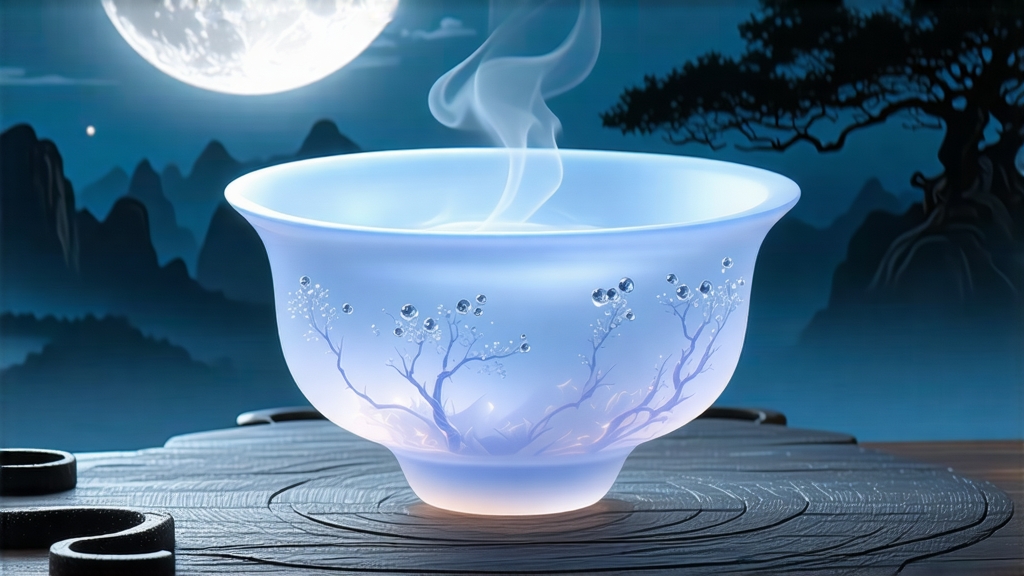
White tea is the most minimally handled of all China’s six great tea families, and within that quiet realm White Hair Silver Needle—Bai Hao Yin Zhen—stands as the purest expression of leaf, air, and time. To the eye it looks more like a collection of tiny ivory arrows than anything we normally call “tea,” yet the moment hot water meets bud it releases a liqueur the color of early morning sunshine on pale silk, and a fragrance that suggests fresh alfalfa, rain-warmed meadow hay, and the faintest trace of honeysuckle. International drinkers often meet white tea first through scented versions—jasmine silver needle or rose silver needle—but the original, unscented Fujian classic is the reference point against which all others are judged. This essay invites you to travel with the bud: from the garden to the basket, from the basket to the cup, and from the cup into the contemplative hush that follows.
Historical whispers
The written record is thin, but local memory in northeast Fujian is long. Villagers around Taimu Mountain claim that bud-plucking for “silver needle” began during the Song dynasty, when pressed white cakes were tribute tea. Once loose-leaf fashion took hold in Ming times, the cakes were abandoned, but the reverence for downy buds remained. By late Qing, Fuding and Zhenghe counties were exporting small lots labeled “Pekoe Tips” through the port of Fuzhou to London and New York, where they fetched prices above many black teas because the silvery appearance looked luxurious in glass showroom jars. The 1915 Panama-Pacific International Exposition awarded a gold medal to a Fuding Yin Zhen, sealing its global reputation. After 1949 the tea became a state gift—Chairman Mao reportedly served it to Richard Nixon in 1972—yet it remained largely unknown to everyday consumers until the early 2000s, when China’s domestic white-tea renaissance met the West’s thirst for low-caffeine, antioxidant-rich infusions.
Terroir and two hometowns
Authentic Silver Needle is made only from the unopened bud of the Da Bai (Big White) tea tree cultivar. The plant is a genetic snow-maker: its buds grow longer and plumper than those of common tea bushes, and they are wrapped in a thick layer of protective trichomes that shimmer like frost. Two micro-regions compete for the title of true birthplace. Fuding, on the coast, gives buds that are stout and straight; the relatively warm days and cool, mineral-rich nights encourage a lilting sweetness reminiscent of rock sugar. Zhenghe, inland and 400 m higher, yields slightly slimmer, more curved buds; the mountain chill lengthens withering and builds higher concentrations of aromatic amino acids, translating into a deeper hay note and a longer, quince-like finish. Neither is superior; they are siblings with different accents.
Plucking etiquette
The harvest window is brutally short: ten, perhaps fifteen days in late March to early April, just before Qingming festival. Buds must be picked at dawn while the overnight dew still sheathes them; this natural moisture prevents the fragile hairs from breaking off in the basket. Experienced pluckers use a “twist-lift” motion that detaches the bud without squeezing it—any bruise will oxidize into an unsightly red tip during withering. A full kilogram of finished Silver Needle requires between 25,000 and 30,000 buds, all plucked by hand, one at a time.
The invisible craft: withering
Once back at the shed, the buds are spread in a single layer on bamboo trays woven so finely that no tip can slip through. For the next 36 to 48 hours they rest in a shaded pavilion whose walls are latticed to invite a slow, diagonal breeze. No rolling, no pan-firing, no shaking—just air, time, and the watchful eye of the tea master. The goal is to drive moisture downward from the core of the bud toward the surface, allowing enzymatic changes that soften grassiness and amplify a honeyed quietude. If the day turns too hot, reed mats are rolled down to filter sunlight; if humidity spikes, charcoal braziers smolder gently to raise the temperature a single degree. When the moisture content falls to approximately 10 %, the buds are transferred to a low-temperature dryer (never above 40 °C) for a final 20-minute stabilization. The entire process is a dialogue between weather and